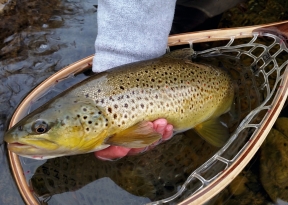
I think we’re about a month away from the Salmonfly hatch on the Henry’s Fork. In fact, it might be less than a month. Picking the start date is a tough call. Every year I try to pick the date when the nymphs start to crawl out at the Vernon Bridge. Usually I’m within a day or two. This year will be a bit more complicated. Right now our snowpack is slightly below average. My pick for the emergence at the Vernon Bridge is May 17th.
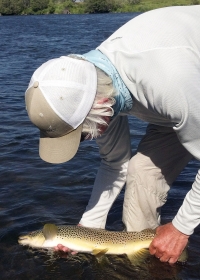
Water temperature is the most important factor. The big bugs emerge when the water temperature is about 56 F. Snow runoff, stream flow, and air temperature play a role in this. Currently our snowpack is slightly below average. This could change. If it stays cool, as it is now, it might improve a little. It will deplete the snow water equivalent if the weather turns warm and above average. I’ve always considered our snowpack to be like another storage reservoir. Cool weather helps hold the water with the snowpack until warmer weather increases runoff. If it turns warm and dry the snow melts more quickly sending more water down the river.
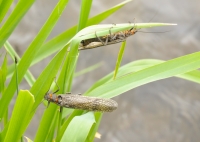
Another important factor is our reservoir water storage. Right now all of the reservoirs in the system are 80% - 99% full. The maximum capacity will likely be a bit earlier than normal. When the reservoir is full, the melting snow will result in a higher outflow.
Streamflow is another very important consideration with Salmonflies. We like the streamflow high. Trout are much more comfortable holding on the banks when the water is high. With the Henry’s Fork there is no need to worry about turbid, dirty runoff until the confluence with Fall River. The best case scenario is for the weather to stay average or below average to hold back the snowpack.
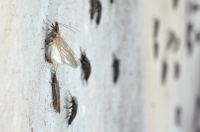
Salmonflies live as nymphs for 3 or 4 years. They live as mating adults for about a week. This means it is important for them to all emerge about the same time to complete the mating process. All of the nymphs must make their way to the shore where they crawl out to emerge into an adult, winged insect. I don’t know how long this migration takes. One thing for sure is that you can turn over rocks along the bank now and not find many nymphs. Give it about two more weeks and we should start seeing more nymphs concentrated near the banks. Some rocks will have handfuls of nymphs a day or so before they emerge.
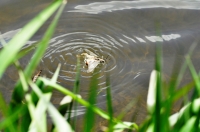
When the nymphs change into adults they will be concentrated in vegetation or other structure along the banks where mating takes place. After mating an egg cluster about a quarter inch in diameter will form on the female’s abdomen. These big bugs don’t get their motors running until the air temperature is optimum. After the air temperature warms up enough, the females fly over the water to drop their egg clusters. The females are about a size larger than the males. They are very clumsy fliers. Many of them fall into the water off their perches along the bank. Others fly out over the water before depositing their eggs. After the male’s job is done, they also fall into the water or fly around aimlessly. It is common to see them flying up paved highways that look to them like water.
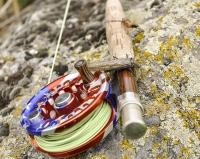
The Salmonfly hatch is a busy time. We try to stock as many flies as we can to cover this hatch but it’s a good idea to be prepared in the event that we run out. Check out our online store. We recommend the Henry’s Fork Foam Salmonfly in size 4 and 6. You also should have a few Golden Stones various colors and sizes. I also like to carry a few Chubby Chernobyls in various colors and sizes. You don’t need to get very specific with the nymphs. Size 4 – 8 Rubberlegs should cover all the basis. Black is the prime color but I would also have a few brown ones too.
In my next blog I’ll discuss what flies to use, where and how to fish them.